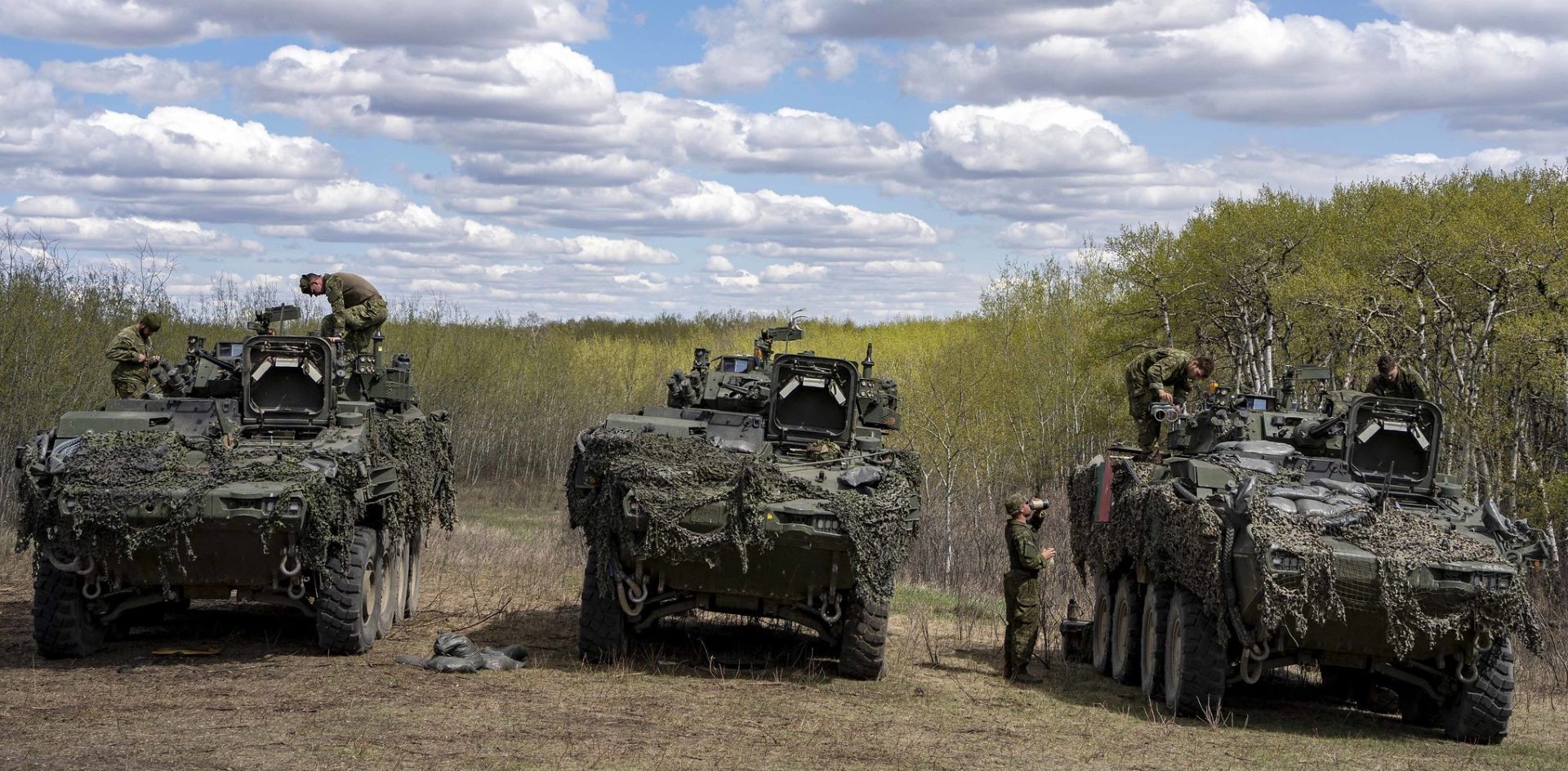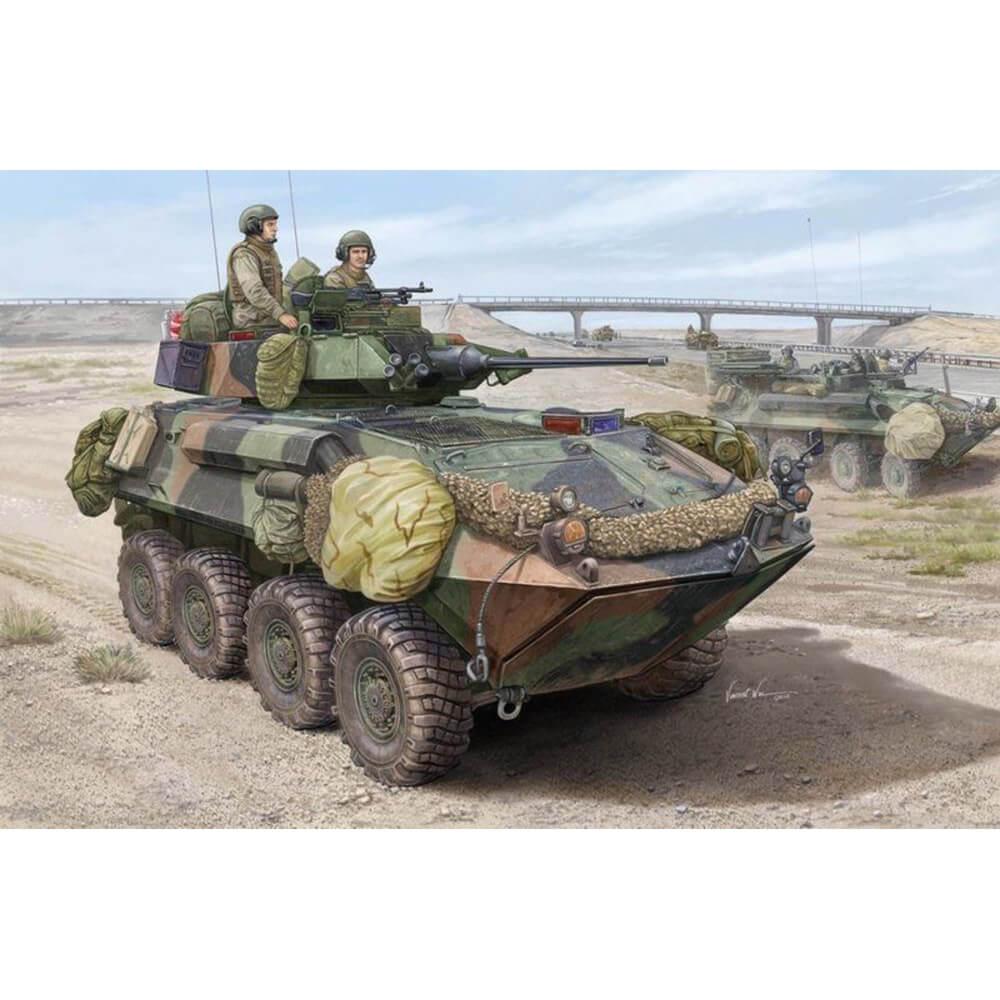Military Lav - A family of American light armored vehicles (LAV), including 15 configurations. It was originally created by CG as a personal vture project.
They were used by the 5th Infantry Company, the 6th Infantry Company (Mechanized), and the 2000th Battalion (Mechanized) in service with the Panamanian Defense Forces.
Military Lav

During the Battle of Paitilla Airfield, he was tasked with blocking the path of SEALs assigned to destroy Noriega's private jet.
For Saudi Military Vehicle Deal, Canada Weighs Jobs And Human Rights
Production of the vehicle was reorganized and located in New Orleans, and in 1994 it was renamed from the V-300 to the LAV-300.
The Philippines ordered 24 LAV-300 MK IIs, 12 APCs, and 12 FSVs in 1993 and delivered them by 1995.
LAV-300s used by the Philippine Marine Corps are designed to be equipped with a .50 BMG/7.62mm NATO turret for APCs and a 90mm Cockerill 90mm gun for FSVs.
In Natick's 1994 January-September 1993 report, the LAV-300 was considered a suitable candidate for the US Army's Military Police Armored Protection Vehicle program.
File:lav Iii, Us Army In 2001.jpg
In 1999, the LAV-300, along with the LAV-600, was considered for selection by the US Army Brigade Combat Team.
In the same year, an infantry fighting vehicle version of the LAV-300 MK II was tested at Fort Knox as a replacement for the Stryker for use by rapid response forces.
Capt. David L. Nobles supported the proposal because of the low financial cost of operating the LAV-300.

In 2008, the Cobb County Police Department reportedly purchased an LAV-300 for $500,000, paying between $45,000 and $51,000 to upgrade the vehicle for police use.
General Land Systems Canada
In 2010, the Federal Defense Industry announced that it had signed a contract with Textron Marine and Land Systems to provide LAV-300 authorized parts, support and other assistance, as well as a technical library of FDI spare parts.
In 2011, Napco contracted with Textron to provide authorized parts, support and other assistance for the LAV-300.
On October 5, 2018, the Department of National Defense of the Philippines launched a tender for the modernization of armored vehicles of the Philippine Navy and Air Force under the Light Armor System Upgrade (LARSU) project with a budget of PHP711, 938, 000.00.
On November 28, 2018, DND issued a request for bids to upgrade LAV-300 in-service PMCs.
Marines Seeking Advanced Reconnaissance Vehicle Prototypes After Unsuccessful Attempts To Replace Lav
On January 10, 2019, Lars & Toubro was awarded a $14 million contract to upgrade light armored systems for the Armed Forces of the Philippines.
It is highly maneuverable, has a speed of 105 km/h and can be transported by C-5 Galaxy, C-141 Starlifter, C-17 Globemaster III, and C-130 Hercules cargo aircraft.
The LAV-300's armor consists of high-hardness Cadalloy steel armor, which has a minimal profile hull capable of withstanding 7.62 mm caliber bullets at any angle.

Survivability is further enhanced with low-observability technology to reduce the minimum return of heat, seismic, siren and radar.
Brazilian Army Chooses Italian Armored Vehicle Centauro Ii
The highly mobile LAV-300 MK II is also fully amphibious and does not require training to cross or swim.
The tires are radial tubeless and can be equipped with a tire inflation system to improve mobility.
It can climb 60 percent inclines, operate on 30 percent side slopes, and overcome obstacles up to two feet high.
The LAV-300 MK II's turbocharged diesel engine allows it to accelerate from 0 to 32 km/h in less than 10 seconds.
At Morinville Council: Lav Iii Project Returns, And New Traffic Safety Plan
In case of shortage of diesel, jet A fuel, kerosene and other light fuels can be used.
Six wheels and dual hydraulic brakes allow the car to accelerate from 20 miles per hour to 0 in 12 meters, giving it a range of 925 km.
6x6 wheels (6 steering wheels - 2 wheel steering) The front axle has a solid beam on the trailing arms. The rear axles have coil springs and 1 shock absorber.

The LAV-300 comes in five different configurations, the most common being command post, armored personnel carrier, anti-tank, military logistics, ambulance, and armored recovery vehicle.
Light Armored Vehicle 25 (lav 25)
An improved version of the LAV-300, known as the LAV-300 MK II, was developed in the 1980s with an intercooler engine, an improved 6-speed, 2-gear transmission, better wheels, and a larger fuel tank. LAV III, originally named Kodiak by the Canadian Army, is the third generation of the armored personnel carrier (LAV) family developed by General Dynamics Land Systems - Canada (GDLS-C), a subsidiary of London-based General Dynamics. , Ontario. . It entered service for the first time since the LAV II in 1999.
This is the basis of the Stryker vehicle used by the US military and other operators. The Canadian Army is upgrading its LAV III to LAV 6 standard.
By July 1991, the Canadian Armed Forces recognized the need to replace their 1960s and 1970s-era armored personnel carriers. As a result, the current Conservative government allocated $2.8 billion to the Multi-Role Combat Vehicle (MRCV) project. The task of the MRCV project was to supply several common chassis-based vehicles to replace the M113 armored personnel carrier, the Lynx reconnaissance vehicle, the Grizzly armored personnel carrier and the Bison armored personnel carrier. However, the project was deemed unfeasible and canceled in March 1992.
By 1994, after the Liberals returned to government, the army still needed new vehicles. As a result, the Army launched the Light Armored Vehicle project, which took over parts of the MRCV project and started in phases to spread the costs. And there was no need to replace the buffalo. In the first phase of the project, the reconnaissance vehicle LAV II Coyote was selected to replace the Lynx.
Greymouth, New Zealand, November 18, 2017: Crew Members Of A Light Armoured Vehicle (lav) Prepare To Depart From At An Open Day For The Military. Stock Photo, Picture And Royalty Free Image. Image 92635553
General Motors Diesel has developed an updated version of the 8×8 platform that incorporates the Coyote's turret and weapons system. In August 1995, it was announced that GM Diesel (then called GM Defse, then acquired by General Dynamics Land Systems of London, Ontario) had been awarded the contract to produce the LAV III, which would replace the Grizzly and most of the others. M113 armored personnel carrier.
The M242 Bushmaster chain gun was mounted on the gun turret of the LAV III, and a machine gun was mounted on the turret.
The LAV III has a two-man turret and is armed with an M242 Bushmaster 25 mm caliber chain gun and a coaxial 7.62 mm machine gun. Another 5.56 mm or 7.62 mm machine gun was mounted on top of the turret. The LAV III has eight 76 mm launchers in two clusters with four launchers on either side of the turret. Class launchers are designed for smoke zones.

In 2009, several LAV IIIs were modified with the Nanook Remote Controlled Weapon Station (RCWS) to provide better battlefield protection against improvised explosive devices and anti-tank mines and increased crew survivability.
Lav 25 Light Armored Vehicle
The LAV III is powered by a Caterpillar 3126 diesel engine producing 350 horsepower (260 kW) and can reach speeds of over 100 km/h.
The car is equipped with an 8x8 drive and has a wheel launch system that allows it to adapt to various terrains, including off-road.
LAV III is equipped with a modern anti-lock braking system (ABS). Unlike earlier versions of the LAV, the LAV III was not amphibious.
The LAV III has the same problems as any other wheeled military vehicle. As with all-wheeled armored vehicles, the ground pressure of the LAV III is greater than that of tracked vehicles of comparable weight. This is because tires have less surface area in contact with the ground than tracked vehicles. High ground pressure increases the likelihood of sinking in soft ground such as mud, snow, or sand, causing the vehicle to become stuck. The low ground pressure and improved traction offered by tracked vehicles give vehicles such as the LAV III an advantage when negotiating slopes, ditches and other obstacles.
This Is The Marine Corps' Wish List For Its Recon Vehicle To Replace The Lav
LAV III can compensate for these effects by lowering its wheels slightly, which increases the surface area in contact with the ground and slightly reduces ground pressure.
However, wheels have a number of advantages over tracked vehicles, including lower maintenance for both the vehicle and the road infrastructure, quieter movement for improved privacy, higher speeds and higher ground clearance compared to better terrain. Wheeled vehicle crews are more likely to be hit by mines or IEDs than similarly armored tracked vehicle crews.
The LAV III's turret gives the vehicle a much higher gravity than originally intended. This has led to concerns that the vehicle may roll in unpleasant areas.

The most common reason is unstable terrain, especially road shoulders, which give the car a sudden shock.
Development] Lav Ad: Revolving Firepower
During driver training, the LAV III's weight balance is taken into account, which greatly reduces the likelihood of a rollover.
Original LAV III armor, including certificate
Military air force jobs, military air compressor, air military, king air 350 military, military king, military air travel, military air conditioners, military discount air travel, air force military housing, us air force military, air force military police, air force military
0 Comments